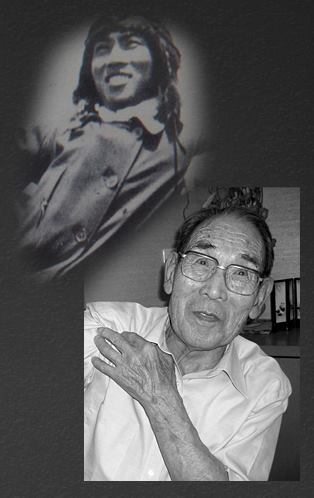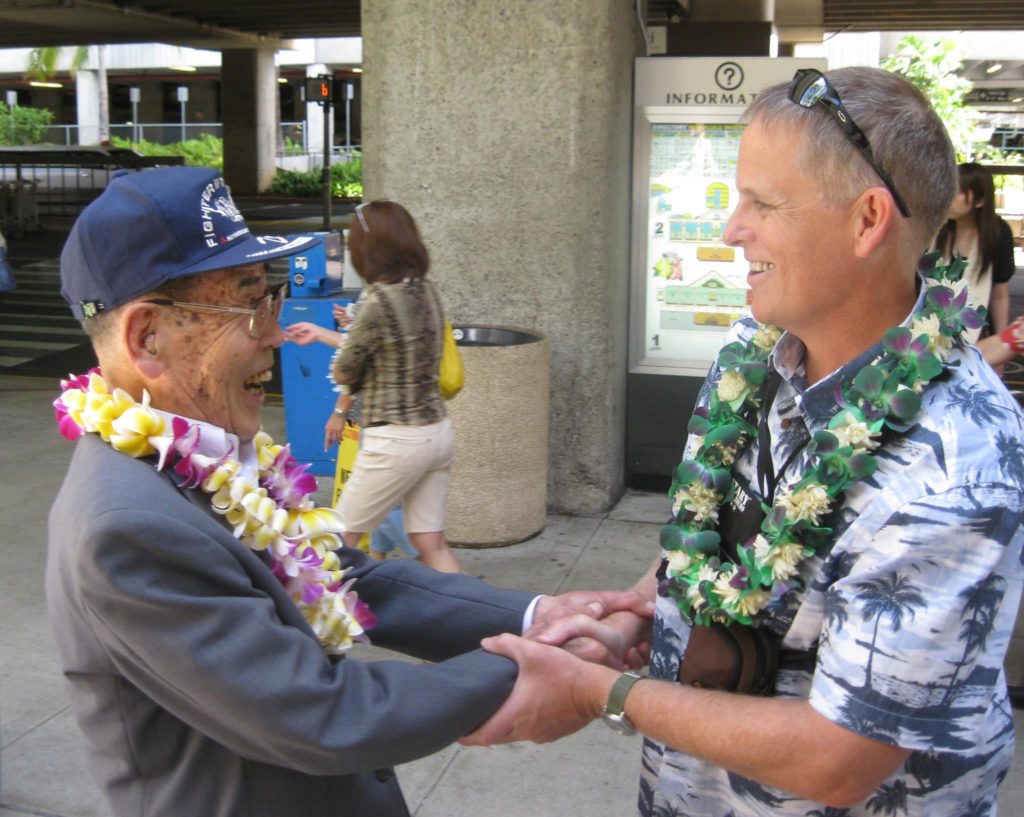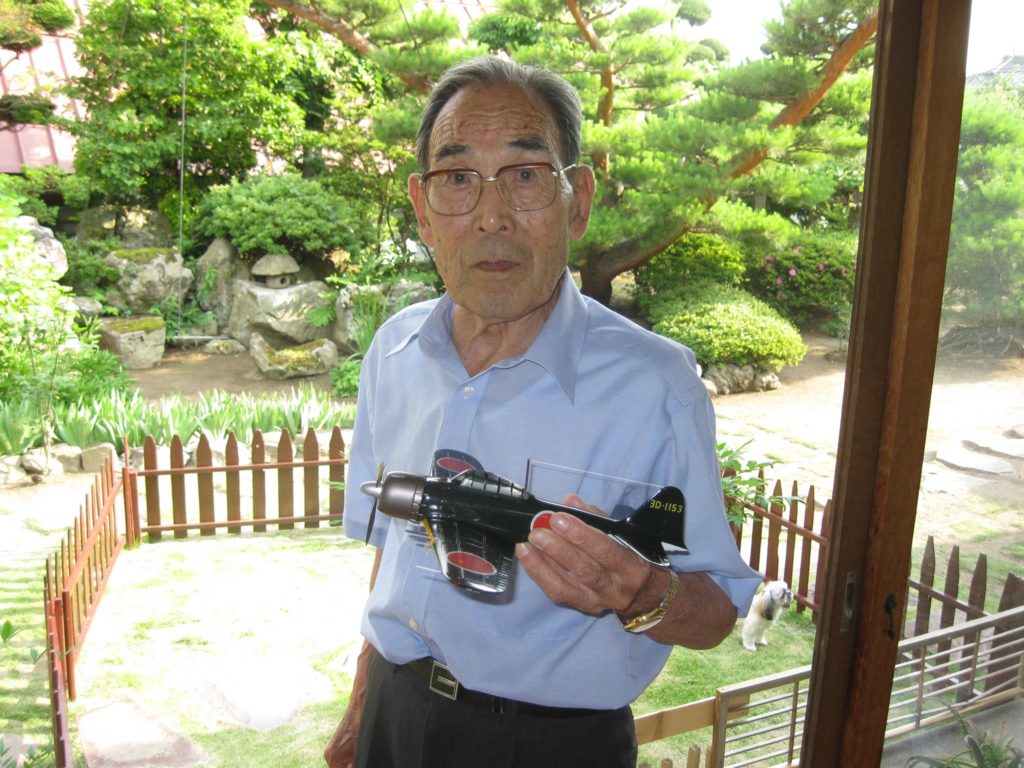Nanjing 1937: A Japanese Pilot Remembers
- By Guest blogger
- 1 August, 2017
- No Comments
 Kaname Harada, a Japanese fighter ace during the war in China and the Pacific, took part in the conquest of China’s capital Nanjing in late 1937, and shortly afterwards bore witness to the horrific slaughter of unarmed prisoners and civilians in the city, an experienced that marked him for decades. Dan King, the author of this article, has interviewed more than 100 Japanese veterans and published two books of wartime testimony, The Last Zero Fighter and A Tomb Called Iwo Jima.
Kaname Harada, a Japanese fighter ace during the war in China and the Pacific, took part in the conquest of China’s capital Nanjing in late 1937, and shortly afterwards bore witness to the horrific slaughter of unarmed prisoners and civilians in the city, an experienced that marked him for decades. Dan King, the author of this article, has interviewed more than 100 Japanese veterans and published two books of wartime testimony, The Last Zero Fighter and A Tomb Called Iwo Jima.
Kaname Harada, a Zero fighter pilot with 19 victories (9 solo, 10 shared) participated in the bombing of the USS Panay, and the battle of Nanjing. In October 1937, Harada found himself assigned to the land-based 2nd Combined Naval Air Group (Ni Renku) comprised of the 12th and 13th Naval Air Groups operating as a land-based unit in China. The 12th NAG flew the Type-95 biplanes (Nakajima A4N1) in the role of air-to-ground combat. The 13th NAG flew the Type-96 Claude fighter assigned to aerial combat. The 2nd Combined Naval Air Group was based at Kunda (Kodai) University’s s athletic training grounds-turned-airfield. Pearl Harbor planner Minoru Genda was a staff member for the Ni Renku. Many of Japan’s aces were grown in the fertile soil of the continent before going on to serve in the Pacific War.
During the northern retreat, the Chinese conducted a scorched-earth policy burning or destroying as they moved 400 miles with the Japanese 10th Army in hot pursuit from Shanghai to Nanjing. By December 8 1937, the Japanese naval “Shanghai Expeditionary Force” and Gen Honjo’s 10th Army converged on Nanjing. Time had run out for the defenders of Nanjing who found themselves in a medieval siege firing from behind thick walls and massive gates, their escape cut off by a wide river with too few boats to carry them across. It could be called “The Chinese Dunkirk”.
On December 9th the Japanese Army field guns struck the Pukow waterfront setting several buildings on fire. Some of the artillery shells splashed near the Panay causing her captain move to a safer anchorage two miles upriver to Sanchiaho, off the Asiatic Petroleum Company installation. Built in Shanghai for duty in the US Asiatic Fleet on the Yangtze River, Panay was caught in the middle of opposing forces so on December 11, she formed a convoy of Socony-Vacuum Oil Company oil tankers; the SS Meiping, Meishia and Meian and moved further up river from the doomed city. The Panay stopped in response to a boat carrying a Japanese Army officer that came on board to check the boat. He asked about Chinese troop positions. The Americans claimed they were neutral so could not provide information to either side.
On Dec 12 1937, the Japanese Navy pilots received orders, based on direct information from the Army through the Naval 3rd Air Fleet, to attack a flotilla of foreign vessels suspected of carrying soldiers away from the battle zone at the Taiheimon section of the city.

Harada with Dan King, the author of this article
The biplanes droned unopposed over the city where Harada from his open cockpit could see masses of people moving in all directions in a state of chaos. “There were enemy soldiers defending the city, and others fleeing across the river. We turned north along the Yangtze River to Hoshien were we located the target; a flotilla of 40 or more vessels of all shapes and sizes, calmly anchored,†said Harada. He continued, “We focused our attack on the larger vessels but the explosions capsized many of smaller craft.”
“I didn’t personally observe any return-fire from the enemy boats. We checked all of our planes when we landed after the attack so I know none of us were hit. This is a fact.” Harada and the other pilots were in high spirits during the flight back to Joshu (Changzhou) airfield base, smiling at each other in recognition of their great achievement. “We helped end the long retreat north by finally trapping the cat in the bag.” Meanwhile the Americans had not heard from the Panay so a naval liaison officer arrived at the battleship Izumo (flagship of the Japanese 3rd Fleet) to ask ship’s captain Capt Ryunosuke Kusaka if he knew the whereabouts of the vessel. Kusaka, who had already received the report of the bombing of ships outside Nanjing, put two and two together. Capt Kusaka conferred with Adm Kiyoshi Hasegawa who dispatched VAdm Rokuzo Sugiyama to the American Asian Fleet flagship USS Augusta with an apology, and confirmation that Japanese forces had sunk the Panay and damaged other ships. The Japanese Navy placed the blame squarely on the Kanto (Kwantung) Army. Harada felt that the Army tricked the Navy into attacking the Panay.
After the city fell, Harada and another pilot requested passes to visit Nanjing to examine the results of their bombing mission that allowed the Army to advance into the city. They could not have imagined the horror that awaited them. The pair walked down to the Hsiakwan (Xiaguan) wharves and witnessed a scene that disgusted them. “Army troops were lining up Chinese men on the docks and lopping off their heads. There were bodies floating in the water. Some prisoners jumped into the river but were shot when they came up for air. Others quietly knelt down and rolled their collars down.

Harada passed away last year at the age of 99
During the short time we stood there, three trucks fully loaded with prisoners drove up. I estimate there were over seventy men killed while we stood there watching.” He asked one the soldiers whose uniform was spattered with the blood of his victims, “Hey you there, why are you doing this?” The man replied, “They are soldiers disguised as civilians.” “But how do you know for certain they’re guerillas?” The soldier replied angrily as if answering a question from a child, “They aren’t wearing uniforms so they’re guerillas!” Noticing the squeamish look on Harada’s face the man teased him by offering his blood soaked sword, “Mr. Navy, why don’t you give it a try?” Harada rapidly fanned his hand in front of his face as he turned away. Harada returned to the airfield shocked by what he experienced. “It is impossible to forget that horrific scene, even to this day.”
It wasn’t long until naval pilots learned they had attacked neutral vessels and possibly killed innocent American and British citizens. “I felt sick to my stomach. I had worked so hard to become a pilot, and now I was going to be thrown in prison,” Harada said. Instead, the pilots were transferred back to Japan, which happened to keep them away from a team of international investigators sent to Nanjing.
During the interview, the author asked Harada if he was sure he wanted to share his Nanjing experiences with Western readers, he replied, “There are some people who say it never happened. I saw it, it happened, we should never forget it.”



 Copyright © 2024
Copyright © 2024
Leave a Reply